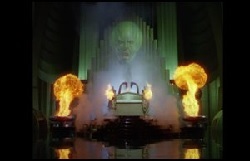Courtesy of Pam Martens.
We are watching a collapse in industrial commodity prices, including crude oil. Yields on junk bonds (high yield debt) have risen dramatically. Investors have sought out the safe haven of U.S. Treasury notes, driving the yield lower as junk bond yields rise from an exit flight out of higher risk securities.
The above paragraph could just as well be describing December of 2008. Unfortunately, it’s also an apt description of where we find ourselves on December 30, 2014.
Aside from the irrationally exuberant U.S. stock market, there are two other serious mismatches that don’t compute between December of 2008, in the midst of the greatest financial collapse on Wall Street since the Great Depression, and December 2014. First, the publicly traded stocks of the largest Wall Street banks were in precipitous decline in late 2008, as they should have been, since rising levels of distressed debt and crashing industrial commodity prices mean the economy is weakening and banks will take a hit to earnings. Bizarrely, today, the share prices of Citigroup, Bank of America, and JPMorgan Chase are actually higher than where they started the year.
The second serious mismatch is the rhetoric coming out of the Federal Reserve. The statement released by the Federal Open Market Committee (FOMC) on December 16, 2008, accurately acknowledged the “declines in the prices of energy and other commodities” as a harbinger of “weaker prospects for economic activity.” Today, despite a stunning collapse in the prices of industrial commodities, the December 17, 2014 FOMC statement mentions only “declines in energy prices” and says nothing about the stark weakness in a broad range of other industrial commodities.
FOMC Release Date: December 16, 2008 (Excerpt)
…




